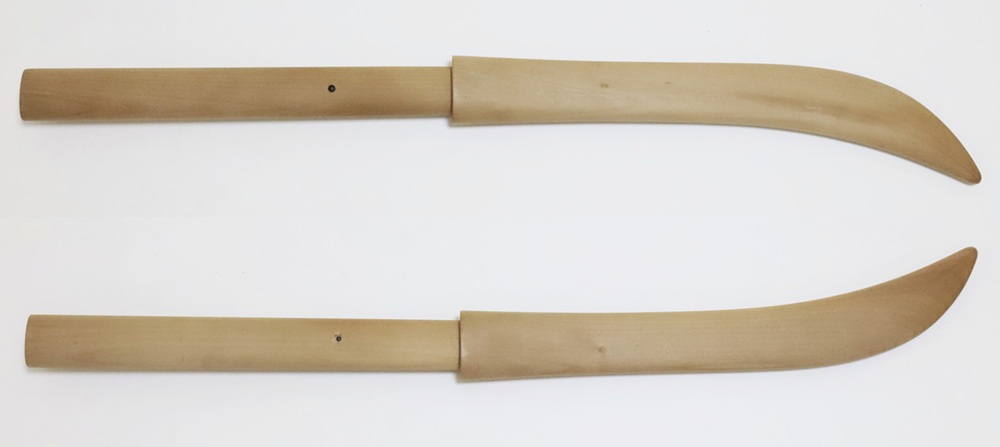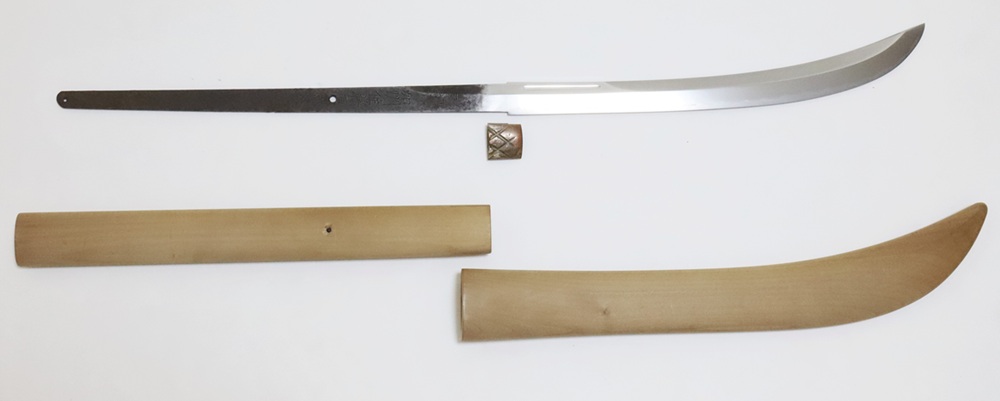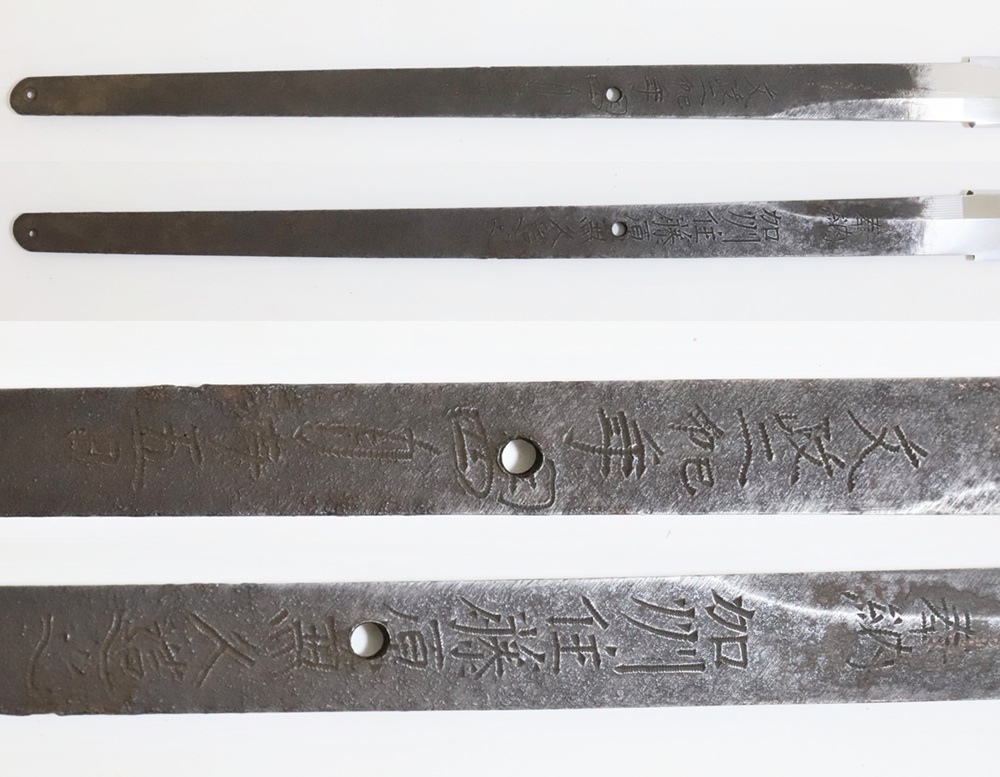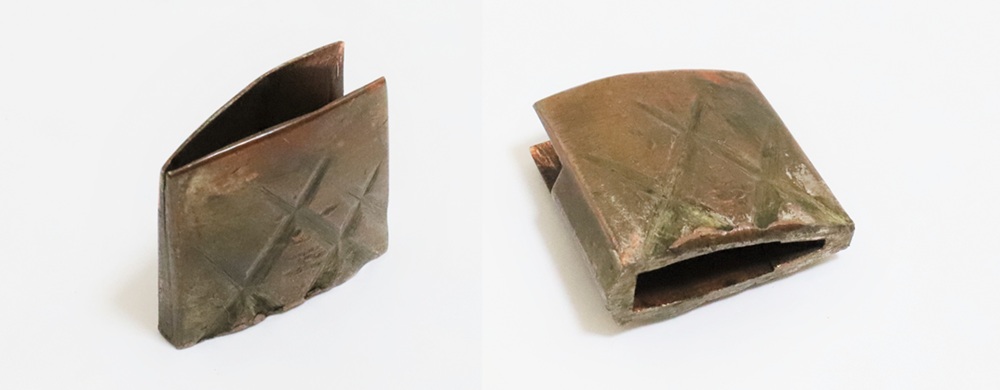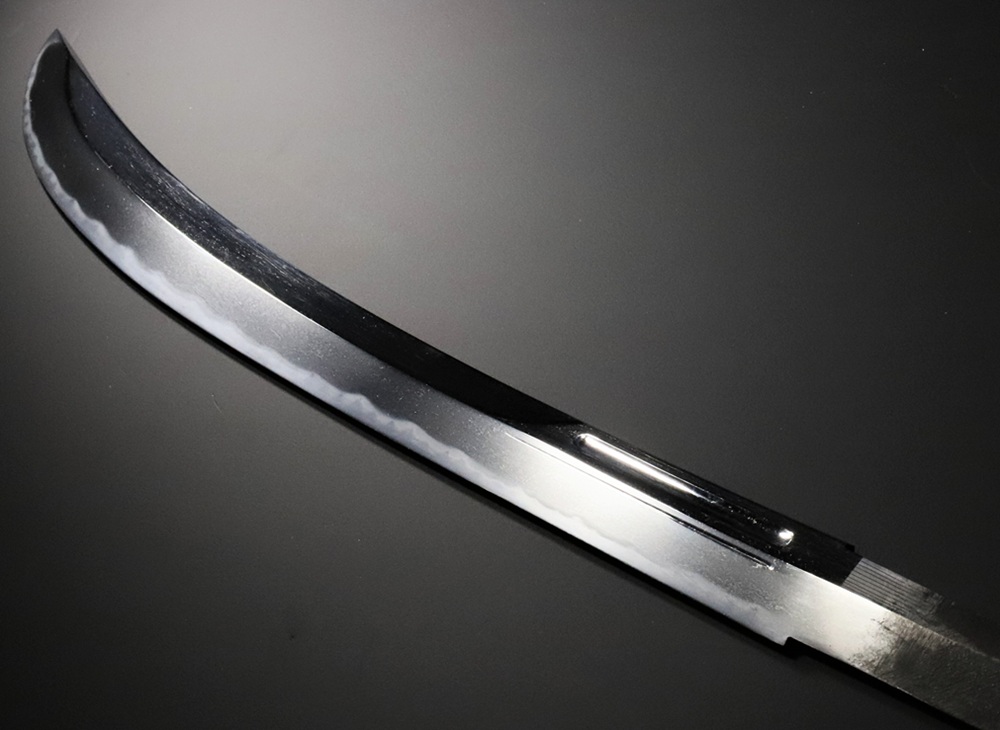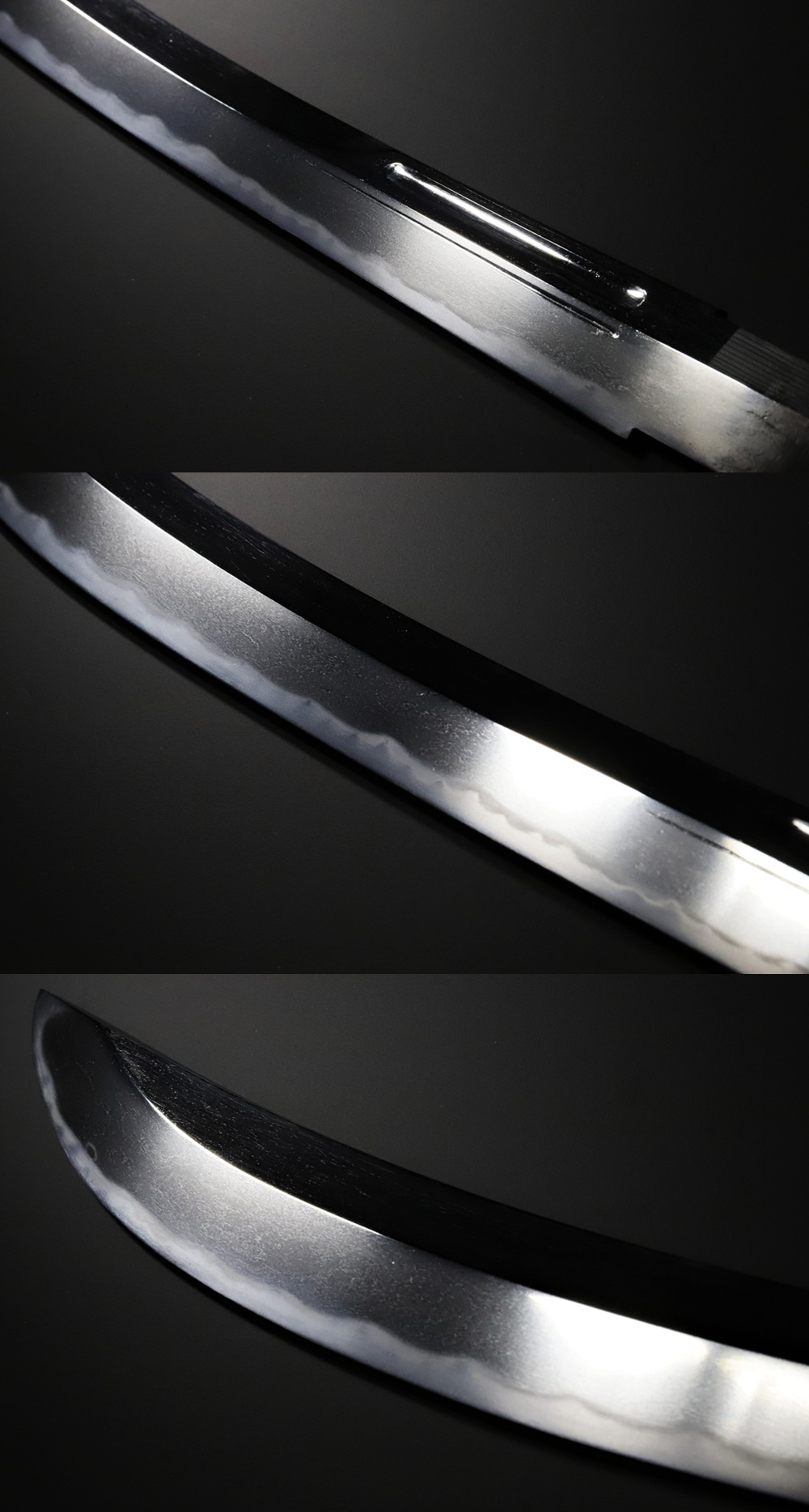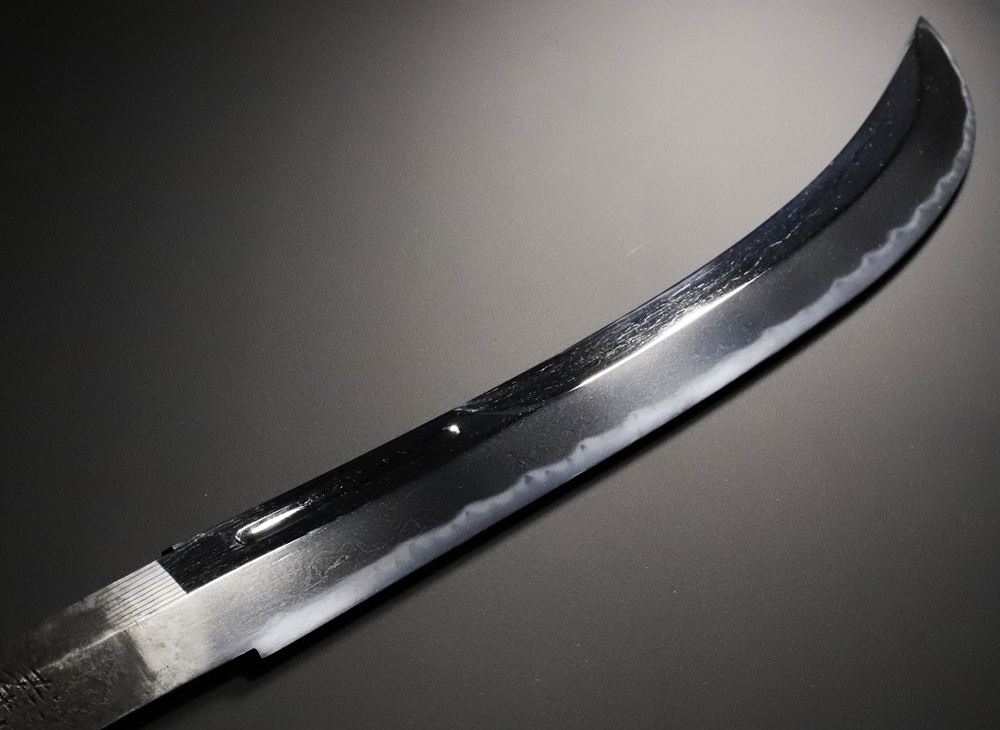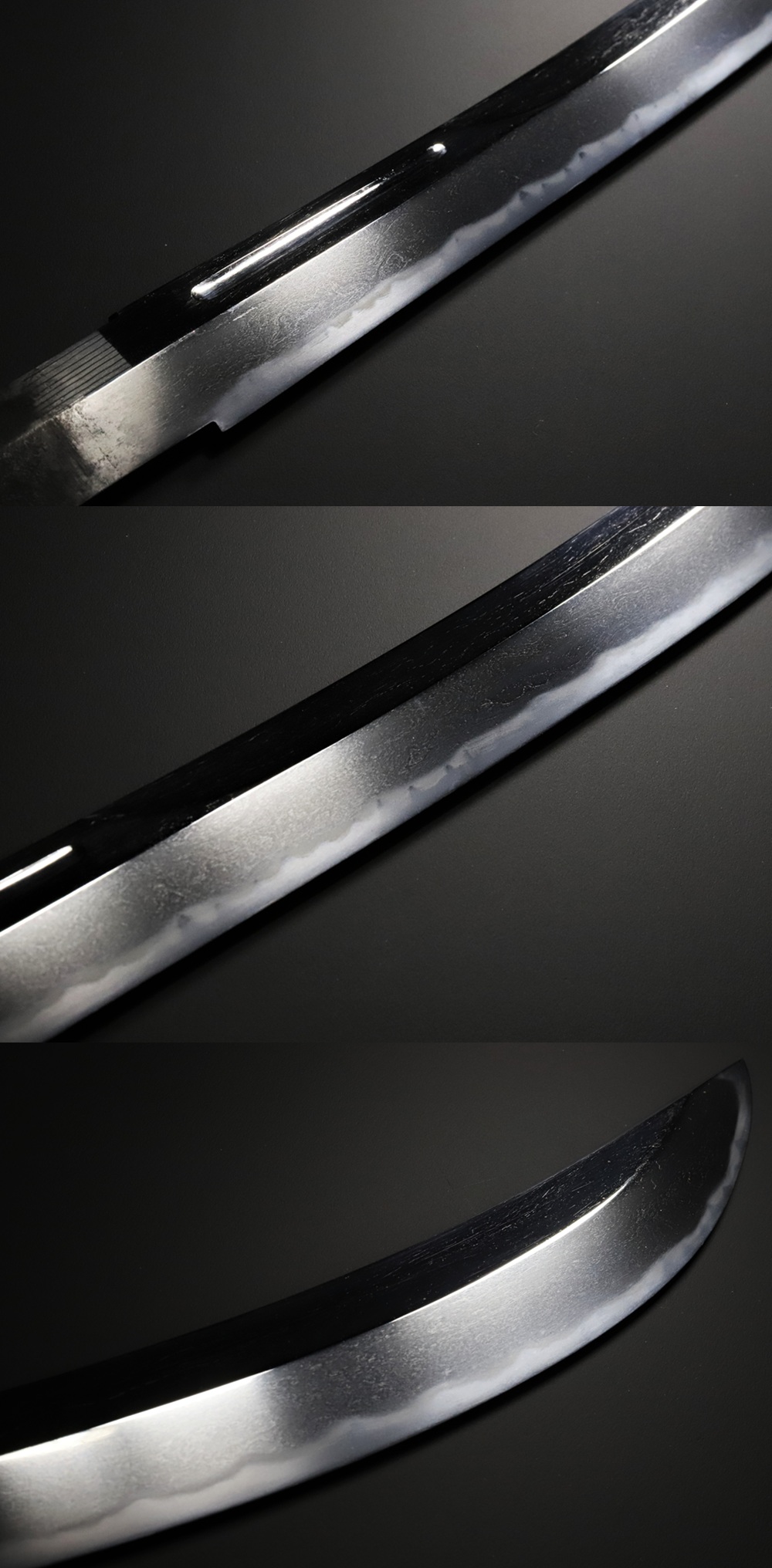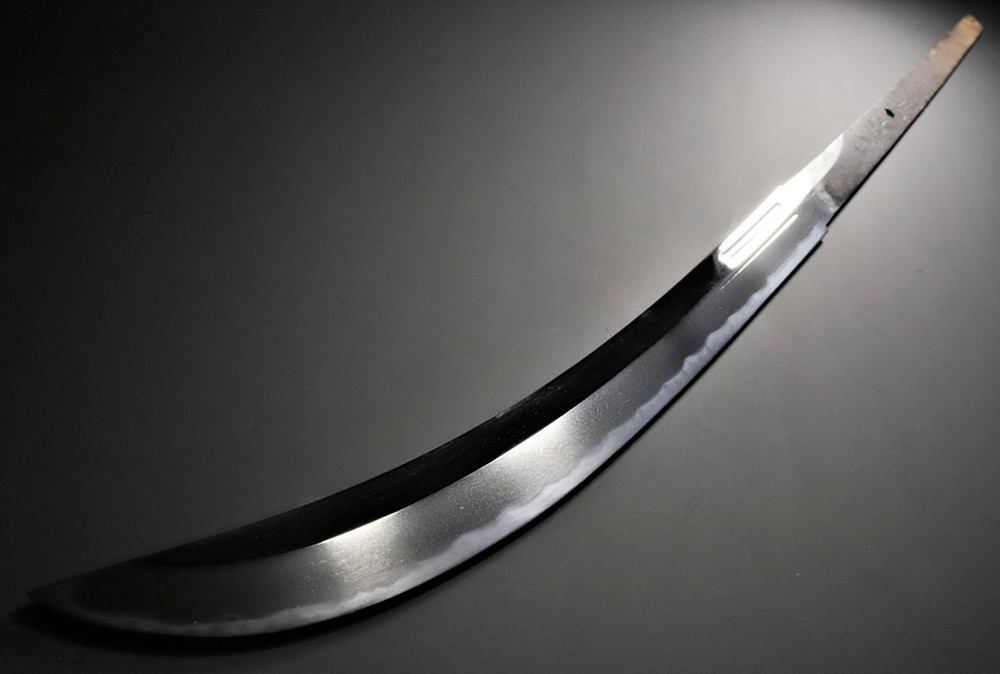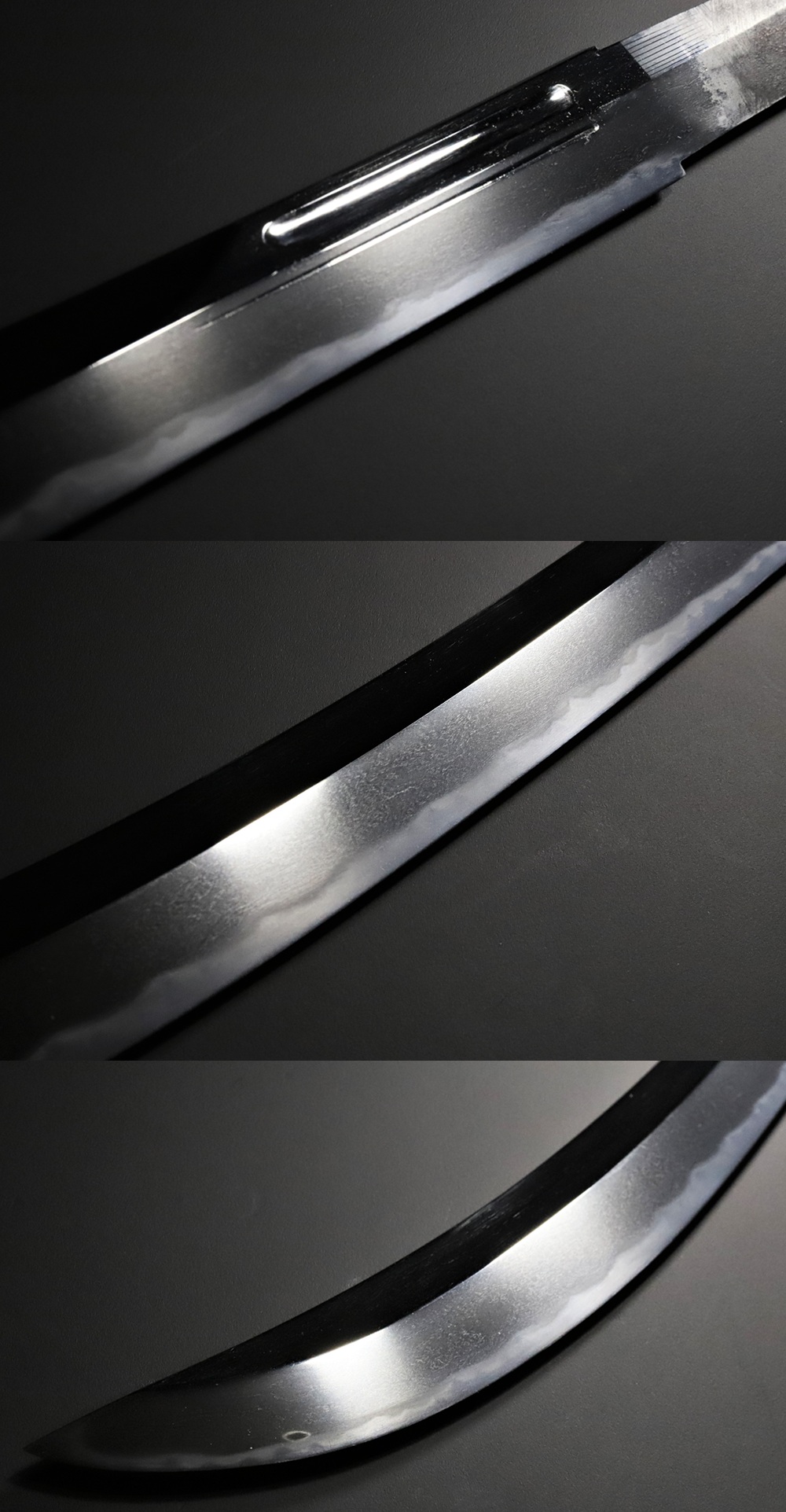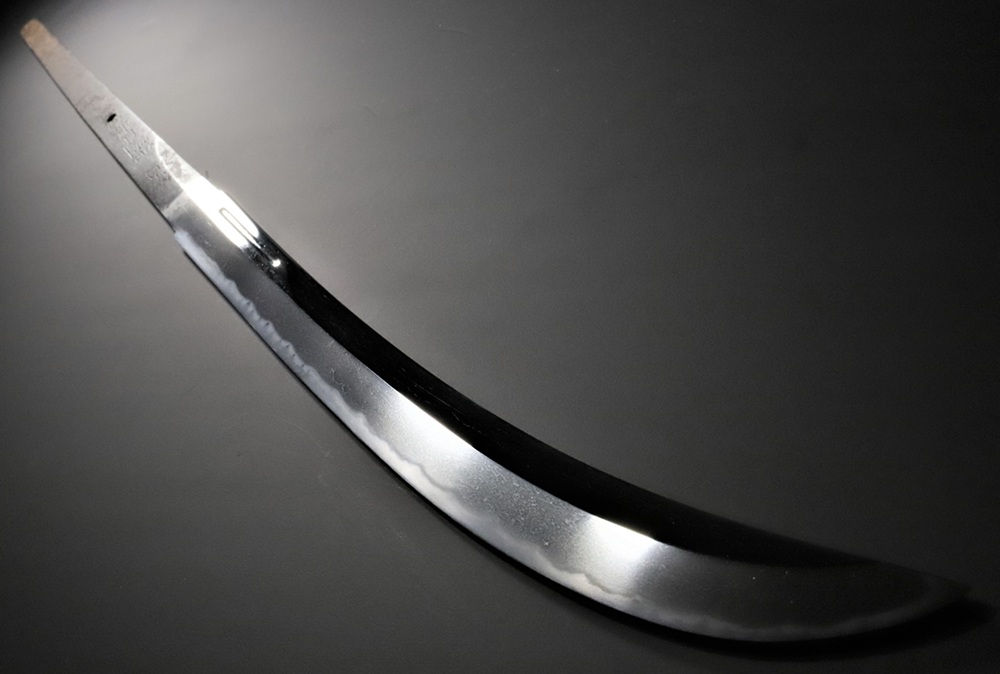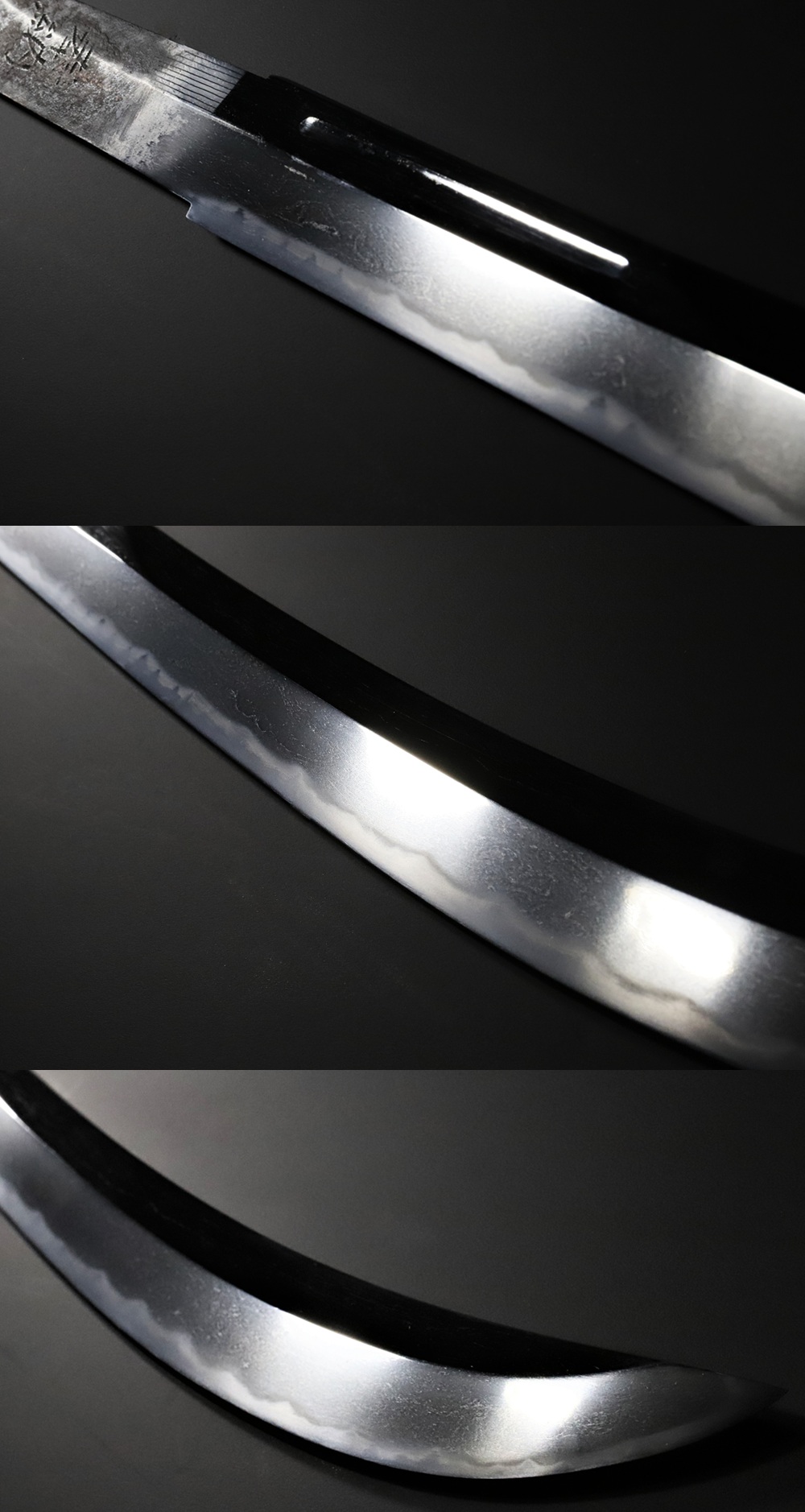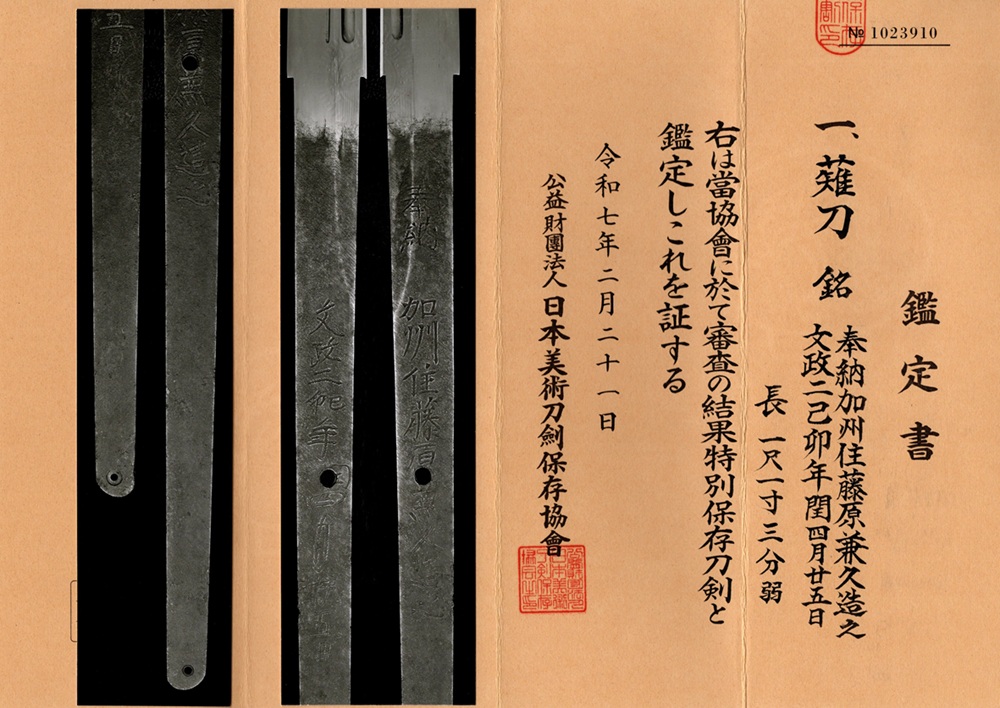
| Product No. NAG-0032 奉納 加州住藤原兼久造之 | |
|---|---|
| Mei |
Dedicated. Made by Fujiwara Kanehisa a resident of Kashu Back: April 25, 1819 the Leap Year of Rabit |
| Shape | Naginatazukuri |
| Region | Kaga Province |
| Era | Late Edo Period |
| Length |
34.2 cm 13.5 in |
| Sori (curvature) |
2.1 cm 0.8 in |
| Motohaba |
2.8 cm 1.1 in |
| Munekasane |
0.6 cm 0.2 in |
| Status | Tokubetsu Hozon Token |
| Certification Date | February 21, 2025 |
| Registration Authority | Ishikawa Prefecture |
| Registration Date | March 18, 1951 |
| Jihada (Metal pattern) | Dense Itame with jinie and chikei |
| Hamon (Temper line) | Ko-gunome midare, like Sanbonsugi, with sunagashi |
| Engraving | Naginata-hi on each side |
| Bōshi (Point / Tip) | Midare Komaru turn |
| Nakago (Tang) | Ubu, Kattesagari with file and kurijiri end |
| Mekugiana (Rivet holes) | 2 |
| Habaki | Copper, Kashu type habaki |
Price |
400,000 JPY |
| This Kashū Kanehisa [兼久] was Jintaro Kanehisa [甚太郎兼久] born in 1795, passed away in 1846. He was a desiple of Yasuhira [泰平], related to the Darani School. The Kashū Kanehisa lineage is said to originate with the first-generation Jingo Kanehisa [甚五兼久], a descendant of Kanehisa in Seki, Mino province who moved to Kashū/Kaga province around the Genki era, the Momoyama period. The lineage continued throughout the Edo period. This naginata is a relatively small and its mei with “Hōnō [奉納]” (Dedication) sagest that this was a special order, and was a meticulous piece of work made by Kanehisa (the eighth generation) in 1819 at his age of 24. It passed the Tokubetsu Hozon Token shinsa in 2025. |


